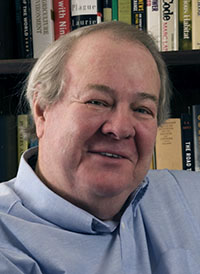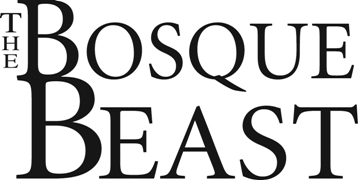
The other day I was filling my gas tank when a rancher with a horse trailer pulled up at the opposite pumps. The horse looked at me, and I said “Hello, horse.” He nodded a greeting.
Later I got to thinking about why I talk to animals. It’s something I’ve done all my life, and it seems natural to acknowledge our companions on this earth we share.
True, most animals cannot communicate with us in the way other humans can, but just because they are dumb does not mean they are stupid. I think my feelings toward them began when I was about 4 years old and living at my grandfather’s farm during WWII . He was an old-fashioned farmer who tilled the land with a pair of stout draft horses, controlling them with commands such as “gee” and “haw,” words they obviously understood and responded to.
Later I lived on a hobby farm where I was responsible for bringing in the cow for morning milking, slopping hogs, gathering eggs, and interacting with a multitude of cats, dogs, ducks, geese, rabbits, pigeons, and even for a while a nanny goat. I had my own Jersey heifer as a 4-H project. Animals were a big part of my childhood.
You cannot tell me that animals do not understand at least some of what we say to them. If you are aware, you can see their responses, not in words but in expressions, sounds, and emotions. Animals such as parrots can actually talk, and chimps and gorillas have been taught to use sign language.
I view it as rude to ignore the animals we encounter.I remember one time I was walking through the Lincoln Park Zoo in Chicago when a crow landed on one end of a bench and addressed a man sitting at the other end. Some crows are taught to talk, and this was one such. It said clearly: “Hello, my name is Joe. What’s yours?”
Now if Joe the crow had spoken to me, I would have told him I was David and glad to meet him. However, the subject of the crow’s inquiry looked around nervously, stood up and hurried away. That’s no way to act toward an animal.
My tendency to talk to animals was further reinforced when at the age of 6 or 7 I read The Story of Doctor Dolittle. As you probably know, this children’s fantasy concerned a doctor who preferred to work with animals rather than people, and could actually talk with them.
I believe some individuals are not unlike the fictional Dr. Dolittle. They might be known as “horse whisperers” or the like. Successful veterinarians have a remarkable knack for creating an instant bond with nervous pets, quickly putting them at ease.
Some of our fellow creatures can recognize a fairly large vocabulary of words. I once had a German Shepherd that was spoiled with a plethora of squeaky toys. All my wife and I had to do when presenting a new one was to tell him its name once, and he would never forget. Even though there were perhaps 40 or more toys, he would root around in the bucket and always come up with the right one.
I recently spent some time with some friends, Rob and Diane, who own an African Gray parrot. He’s an endless source of entertainment, chattering away phrases, sentences, and even whole conversations. Many of his utterances are so appropriate that one cannot help but think he actually knows the meaning. For example, he greets Rob each day with “Good morning, Rob.”
His relationship with Diane is less friendly, and on one occasion I heard her admonish him for using the “F word.” He retorted with the challenge, “Are you talkin’ to me?” It was just like an unruly child acting out.
Some may think it’s strange to speak to animals, but to me it seems perfectly natural. After all, we share this planet with other creatures. Next time you encounter an animal, why not say hello? You may be surprised to feel a sense of belonging to the wider community of living things.
David L. Brown is a writer, editor, and photographer formerly of Rio Rancho. Author of the column “Travels with Tiggy,” he lives full-time in his RV.
